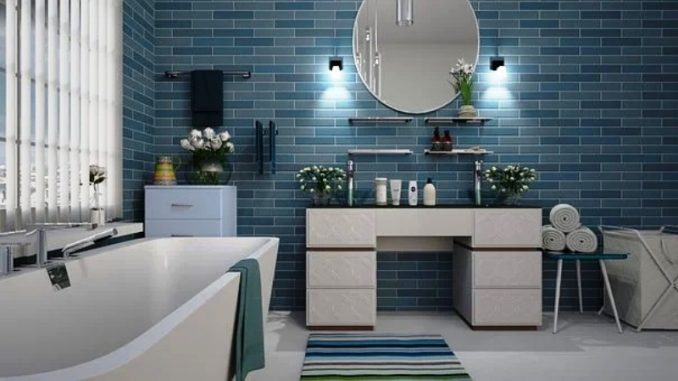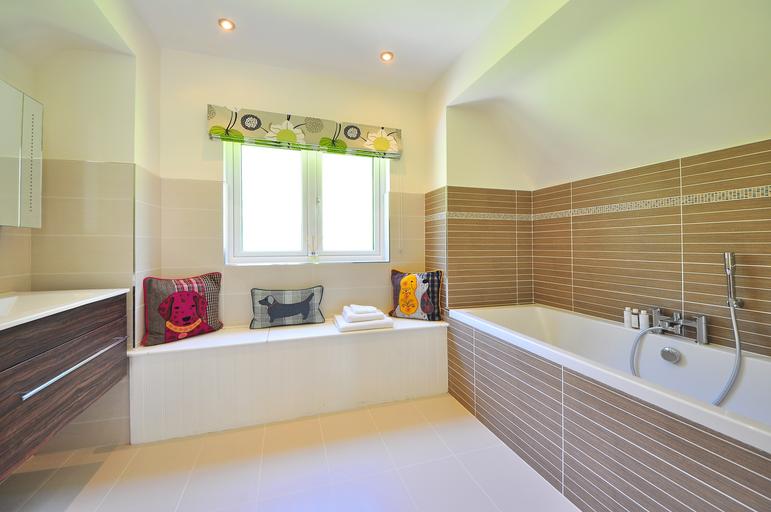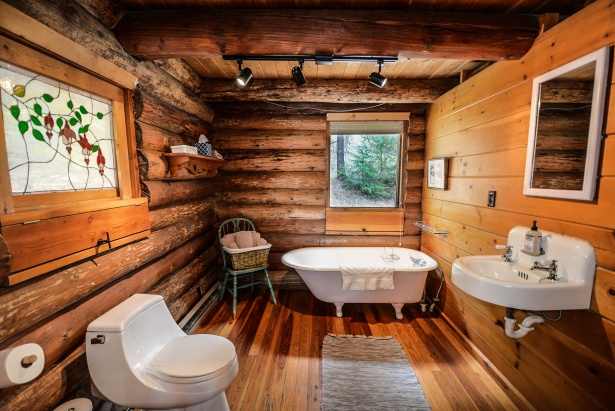
The 4 Most Popular Bathroom Materials
Summary
– Criteria to take into account when choosing bathroom material
– 4 most commonly used materials for a bathroom
The choice of materials affects a bathroom’s appearance and its durability, ease of maintenance, and of course, its price. The offer is exceptionally vast, so this post has summarized the main criteria for choosing the material best suited to your needs and the advantages and disadvantages of each material in a bathroom.
Criteria to take into account when choosing bathroom material

Several criteria should be taken into account when choosing between the different materials available for your bathroom. You can generally use these materials for sanitaryware, vanity tops, furniture, walls, and floors (with the notable exception of glass, not recommended for the latter).
– Water resistance. In this room where humidity reigns supreme, and water splashes are every day, waterproofing is an essential criterion of choice.
– Slip resistance. For the floor, opt for a non-slip covering. The PN rating determines the degree of barefoot adherence, grading the flooring from A to C, with A being the least adherent.
– Resistance to shocks, scratches, and stains. Bathroom flooring and sanitaryware are subject to harsh tests from dirt, cosmetics, etc.
– Ease of maintenance. Whether it’s a waterproofing treatment that needs to be reapplied regularly or specific household products that need to be used, it’s best to know what the maintenance requirements are for the chosen material.
– The style of the bathroom. The materials should match the decoration and furniture in the manner you wish to give to the room: modern or rustic, for example.
– The budget. It would help if you weighed the cost of purchasing the material against the cost of installation and durability.
The most used materials in the bathroom
1. Ceramic tiles

From porcelain to earthenware, including stoneware and terracotta, ceramic is a common material for the bathroom.
Highly resistant to impacts, scratches, stains, heat, and aggressive products, ceramic is also particularly easy to maintain with soapy water.
However, it may feel cold to the touch or underfoot. On the floor, it should be chosen to be non-slip.
Its price is very reasonable at the entry-level: from 15 $/m² for stoneware or terracotta to more than $300 for porcelain.
2. Wood

Wood can be chosen from a wide range of species, from solid European woods that must be treated to resist humidity (beech, pine, oak, etc.) to exotic woods (ipe, teak, iroko, etc.) and wood panels (chipboard, waterproof plywood).
Natural and warm wood will not have the same resistance depending on the species chosen, knowing that all are sensitive to scratches and impacts. As for maintenance, you must apply a product such as oil, wax, saturator, or other regularly.
The price will range from $30 to more than 150 $/m².
3. The stone

Stone can be natural (marble, granite, slate, quartzite, travertine, etc.) or reconstituted. It is then composed of natural elements crushed, then compacted by a binder like concrete or cement, before being dyed and molded to give them the appearance of natural stone. It is reconstituted and non-porous, unlike natural stone, which must be protected by a waterproofing treatment, approximately once a year. Daily maintenance is done with soapy water.
Note that natural stone is a durable and robust material. It has an attractive natural and irregular appearance but develops a patina over time. Beware, the stone is heavy and is best reserved for large bathrooms.
If the price of the reconstituted stone is between $15 and 50 $/m², the cost of natural stone ranges from $70 to over 400 $/m².
4. Concrete

Concrete is made of a mixture of cement, water, aggregates, and possibly additives such as resins and colorants. It can be rough, waxed, smoothed, or tinted.
Also, concrete is resistant, durable, waterproof, and hygienic and can be applied to all types of surfaces. Depending on its finish, it can be non-slip.
Be careful; its installation must be rigorous and generally requires the help of a professional. Porous concrete must be protected by a water repellent or a varnish, for example. You can maintain it daily with a soft cleaning product.
Its price is about 50 $/m², including the protection product.
I hope this post on the 4 most used materials for the bathroom helps you make your choice! Remember to share your comments below.

Leave a Reply